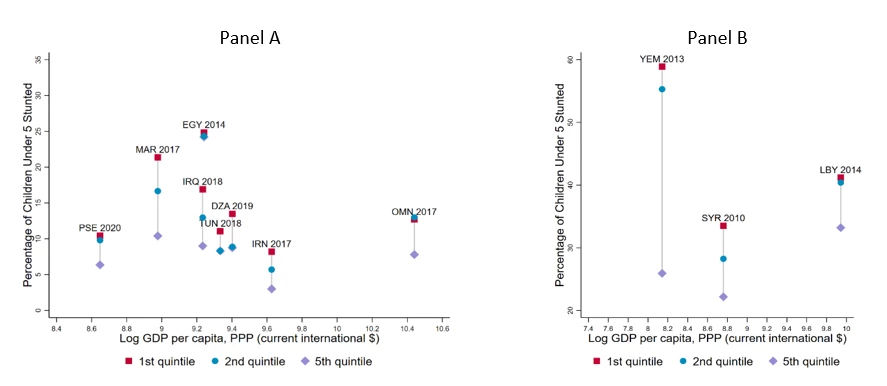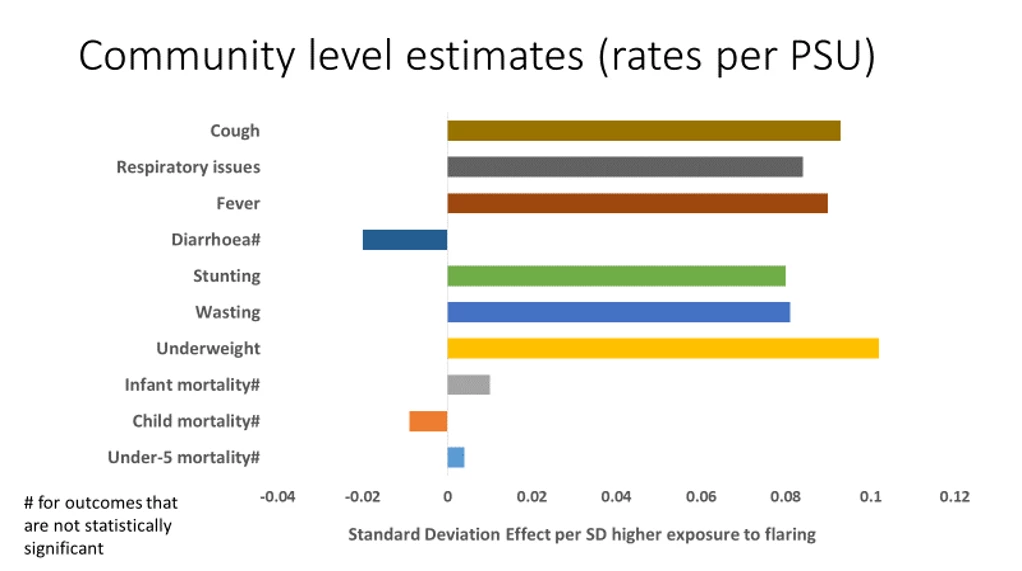 Results show an association between flaring and adverse health outcomes in the oil-producing regions of Nigeria / Image: Ed Kashi/World Bank
Results show an association between flaring and adverse health outcomes in the oil-producing regions of Nigeria / Image: Ed Kashi/World Bank
Burning off natural gas during oil production (flaring) comes with significant environmental and economic costs. In addition to wasting a valuable source of energy, flaring has negative impact on human health. The practice is prevalent in oil-producing Sub-Saharan African (SSA) countries. Nigeria, with the largest proven gas reserves in Africa, contributes the most to flaring on the continent .
What do we know about the impact of flaring on human health?
Flaring releases air pollutants such as carbon monoxide, carbon dioxide, volatile organic compounds, sulphur dioxide, polycyclic aromatic hydrocarbons, and particulate matter in the form of soot. Most of the available data on the human health impacts of flaring comes from developed countries and may not reflect the experiences of developing countries. In addition, the evidence on the health impacts of flaring from developed countries comes from the context of unconventional oil production (fracking). In developing countries, flaring is part of conventional oil production. This is a critical distinction as fracking releases other air pollutants that do not result from flaring alone.
Flaring and human health in Nigeria
Nigeria is one of the top seven gas-flaring countries. It is estimated that around 2 million people in the country live less than 4 km away from a flare site . Most of the focus on the impact of flaring has been on the economic impacts. Likely harm to human health, which can be long-lasting, has largely been ignored. Available health evidence is limited to small case studies examining the impact of flaring in a few communities around flaring sites. The lack of evidence is not surprising because identifying the comprehensive health impacts of flaring requires detailed data on air quality, flaring volumes, and health records, which are often unavailable or unreliable in developing country contexts.
In our recent paper, we bridge this gap by linking data on gas flaring locations and volumes from satellite observations with child health data from Demographic Health Surveys (DHS) to examine the impact of flaring . The satellite observations come from the VIIRS Nightfire aboard the Suomi satellite launched in 2012. Its sensors can detect heat emitted by gas flares at excellent spatial resolution by collecting shortwave and near-infrared data at night. Information collected has been used to identify flaring spots and estimate global gas flaring levels. The National Oil Spill Detection and Response Agency and the Nigerian Ministry of Environment have collaborated to make the geographic coordinates of each flaring point in Nigeria as well as monthly estimates of the flare volume from each location publicly available.
In the paper, we calculate the risk of exposure to flaring for each DHS cluster as the inverse distance (to each DHS cluster) weighted average of flare volumes from each flare site. This approach allows us to consider the different volumes of gas flared in each location and to account for the potential effect of offshore flaring in an equivalent way to onshore flaring.
Why rely on satellite data to measure flaring?
Using satellite data has several advantages. One of them is that the data is available at very disaggregated levels (for each flare point) that allows linking it to individual DHS clusters. With official data being self-reported, the actual emission levels are susceptible to under-reporting. The limitation of official statistics becomes apparent when comparing estimates from the two sources over time. Prior to the introduction of new regulations that raised penalties for flaring, data from both sources was relatively aligned. After new regulations with significantly increased fines for flaring came into force in 2018, official estimates became over 30% lower than the satellite estimates.
Figure 1: Flaring Volume Estimates: Official (Self-Reported) vs. Satellite
Impact of flaring on the incidence of diseases, child nutrition, and deaths in Nigeria
At both the individual and community level, we find significant positive associations between flaring and community-wide rates of children having a cough, respiratory illness, and fever, along with the rates of stunting, wasting, and being underweight . Effects that include controls for household and community characteristics are slightly larger than the unconditional effects. At the community level, one Standard Deviation (SD) higher volume of gas flaring is associated with about 0.1 SD higher rate of stunting, wasting, and being underweight, and also 0.1 SD higher rates for respiratory illness symptoms. We find no association with infant or child mortality at the cluster level.
Figure 2: Community-level impact of flaring on child health outcomes
Our individual-level results corroborate these patterns: the probability that a child has a cough, other respiratory issues, or a fever is three percentage points higher per SD with greater exposure to flaring (equivalent to one-sixth of the mean risk for these disorders). The probability of being underweight or wasted is one percentage point higher per SD with higher flaring exposure, which is about one-tenth of the mean risk. We find no significant relationship between flaring and death.
Our results show an association between flaring and adverse health outcomes in the oil-producing regions of Nigeria. We plan to expand our research to explore if a causal impact of pollution on health outcomes can be obtained by exploiting the variation from the maintenance shutdown of wells and comparing the health outcomes of siblings born to the same mother before and after flaring.
Our analysis provides an initial view into the child health impacts of flaring in one of the areas with the highest flare activity in the world. The method and design that was used can be extended to other gas-flaring countries on the continent and beyond. Finally, we demonstrate the value that can be added to geo-referenced survey data by linking it to satellite observations of environmental phenomena, especially for countries that lack funds for conventional monitoring.




Join the Conversation